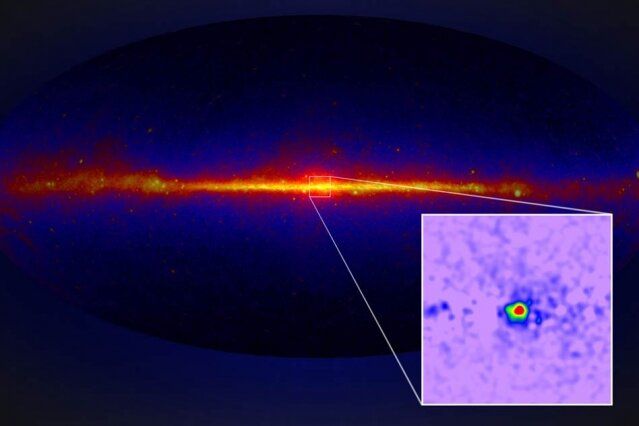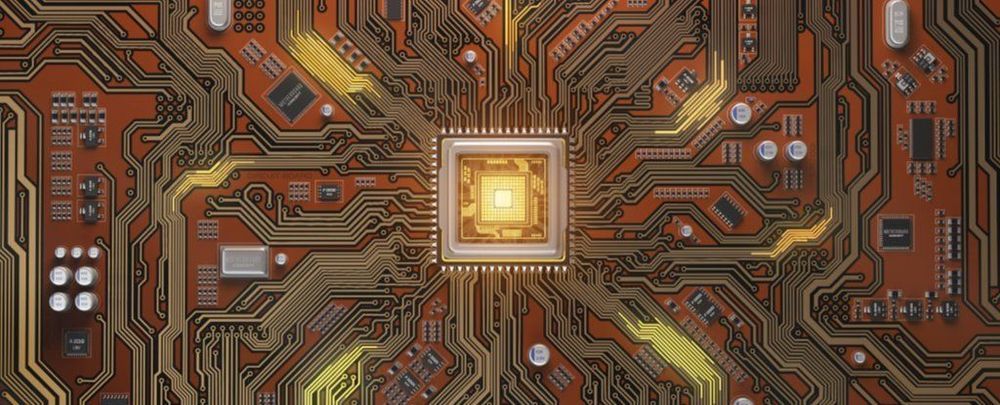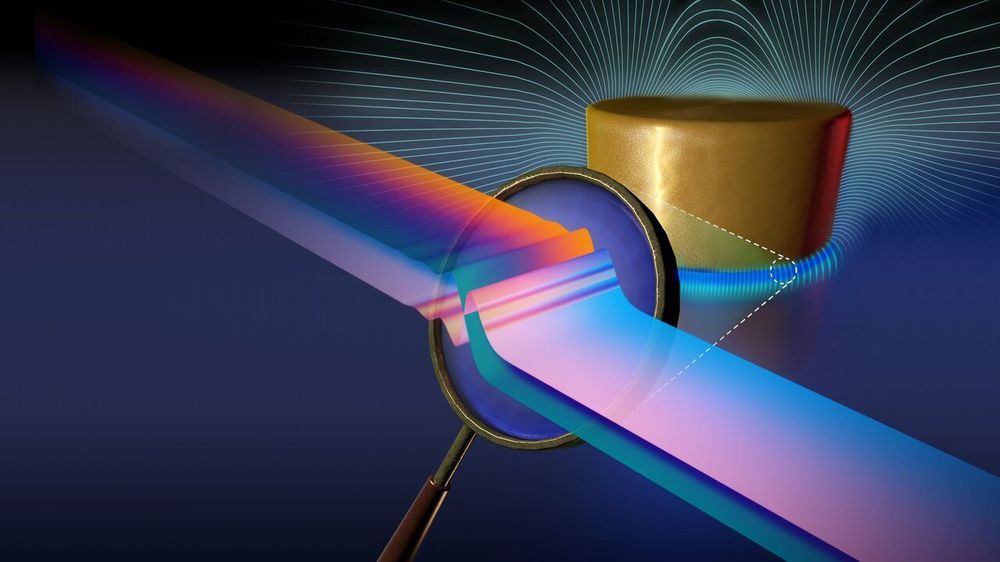Antarctic mollusk fossils shed new light on the extinction event that killed the dinosaurs.



MIT physicists are reigniting the possibility, which they previously had snuffed out, that a bright burst of gamma rays at the center of our galaxy may be the result of dark matter after all.
For years, physicists have known of a mysterious surplus of energy at the Milky Way’s center, in the form of gamma rays—the most energetic waves in the electromagnetic spectrum. These rays are typically produced by the hottest, most extreme objects in the universe, such as supernovae and pulsars.
Gamma rays are found across the disk of the Milky Way, and for the most part physicists understand their sources. But there is a glow of gamma rays at the Milky Way’s center, known as the galactic center excess, or GCE, with properties that are difficult for physicists to explain given what they know about the distribution of stars and gas in the galaxy.
A new treatment shows promise for revolutionizing prostate cancer treatment, offering a minimally-invasive and relatively low-risk alternative to traditional surgeries and radiotherapies. Called TULSA, this method uses sound waves to eliminate the diseased tissue in the prostate, leaving the rest of the healthy tissues behind. According to the researchers, patients treated with this method experience ‘minimal side effects.’

The immune system is already our best defense against cancer, but sometimes it needs help. After all, cancer has a knack for deceiving it and hiding from immune cells, giving itself time to grow and spread. Now, researchers at QIMR Berghofer Medical Research Institute in Australia have identified one way it does so, and found a method to counter it in mouse tests.
T and NK cells act like the foot soldiers of the immune system, searching the body for invading pathogens and attacking them. But their activity can be regulated by other immune cells, such as mucosal-associated invariant T cells (MAIT cells), telling them when to attack and when to stand down.
During the new study, the QIMR researchers discovered that if MAIT cells were switched on, they would prevent T and NK cells from attacking tumors. The tumors seem to have figured this out too – the team found that cancer cells actively turn on MAIT cells by displaying molecules called MR1 on their surfaces.

Researchers with INSERM in Paris have detailed their development of a new vaccine strategy that shows promise for treating inflammatory bowel diseases like Crohn’s disease, as well as metabolic conditions like obesity. Key to the vaccine’s potential effectiveness is gut microbiota, abnormalities of which have been linked to a variety of health conditions. The new vaccine works by modifying these bacteria to protect the intestinal wall.

Quantum computing has the potential to revolutionise the processing power at our fingertips, but for the moment a lot of it is just potential.
Researchers have been uncertain on whether we’ll ever be able to harness quantum computing in a practical, affordable, realistic way. But we might have an exciting new lead.
Two new studies show how quantum technologies can work with everyday electronics – specifically, transmitting quantum information using devices made from silicon carbide, a material which is already used everywhere from LED lights to telescopes.


BOSTON, MA — Xfinity Comcast cable television and Internet customers were without service Wednesday morning, thanks to the company’s sixth major outage in the past five days. A spokesperson for Comcast was not immediately available for comment. In addition to the outage in Massachusetts, there were reports of service interruptions in other parts of the country.
Businesses and residential customers on the North Shore were particularly hard hit by the outage. In Salem, the recreational marijuana retailer Insa said it would be closed until further notice because of the outage. At least 15 North Shore communities are affected by the outage.


On Dec. 11, 2019, a general framework for incorporating and correcting for nonclassical electromagnetic phenomena in nanoscale systems will be presented in the journal Nature.
More than 150 years have passed since the publication of James Clerk Maxwell’s “A Dynamical Theory of the Electromagnetic Field” (1865). His treatise revolutionized the fundamental understanding of electric fields, magnetic fields and light. The 20 original equations (elegantly reduced to four today), their boundary conditions at interfaces, and the bulk electronic response functions (dielectric permitivity and magnetic permeability) are at the root of the ability to manipulate electromagnetic fields and light.
Life without Maxwell’s equations would lack most current science, communications and technology.